"My ABC's Of Nature" Series-Letter "S" Continued-Part 35
There are thousands of species of Slugs and they are found all over the world. They vary in length and are between 1/4" to 10" in length. They vary in color also; can be whitesh-yellow, grey, brownish or black. Slugs have long and short tenicales on top of their head. On top of the long tenicales are light sensitive eye spots and they use the short tenicales for touch and smell. Slugs do not have a shell and they can flatten their body and elongate it 20 times when needed to enter tiny holes. They are covered in slime which helps to prevent injuries. What I found interesting is the fact that they have a chemical in their slime which enables them to find their way home.

Slugs are most active during spring and autumn and emerge at night to feed on leaves, roots and decaying vegetation. Some species feed on earthworms and other slugs. They have male and female organs and are able to produce offspring on their own, however; they prefer to find partners to exchange packages of sperm. A couple of times a year, slugs lay between 20 to 100 eggs on the surface of soft soil; usually under leaves. The incubation period depends on the weather conditions. Slugs live 1-6 years in the wild. Since slugs and snails are closely related, you will find more information about slugs below and you can compare them with snails.
I was shocked when I saw this snail on my porch wall after one full day of rain. This is the first time I have seen a snail in person and I was so excited. Whoever said that snails move slow, must not have been talking about this one because I barely had time to take photos.
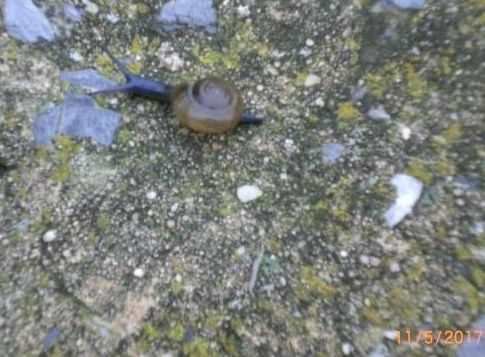
This is a common garden snail, a land snail which is closely related to slugs. They are both gastropod mullusks; lacking internal skeleton and bones. There are between 85,000-150,000 mullusks worldwide and 80-85 percent of them are gastropods. There are over 65,000 species of gastropods worldwide; 30,000 are marine, 5,000 live in fresh water and 30,000 live on land. Unlike slugs, snails have a spiral shell that protects their body and internal organs. As the snail grows, so does its shell. They have large tenacles for sight and the shorter tenacles are for feeling.

The shell of the land snail is light brown with darker brown bands that follow the spiral of the shell. Snails are more active in damp weather and at night. As the snail moves, it continuously loses water. The snail will retreat into its shell when conditions become too dry and will seal the entrance with a parchment-like barrier called, "epiphragm." It can survive several months in this state without water. Snails are covered with slime that helps to prevent injuries. They feed on algae, fungi, plant leaves and decaying vegetation.
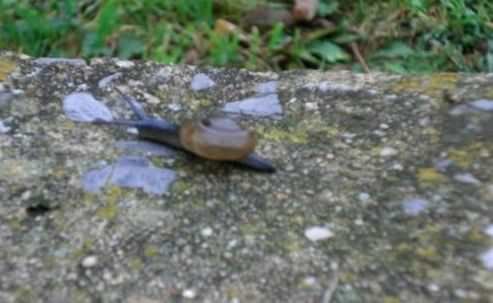
Snails have male and female organs, but unlike slugs, they still need to find another snail to mate with. One snail will initiate mating by piercing the skin of the other snail with a "calcified love dart." This will stimulate the other snail into exchanging small packets of sperm. After mating, the snail will produce eggs internally, which are then fertilized by the sperm that was exchanged. Up to one month after mating, the snail will lay approximately 100 eggs in a nest underground in damp soil. Baby snails will begin to hatch approximately 14 days later. The babies have a small fragile shell and will not reach maturity until they are two years old.
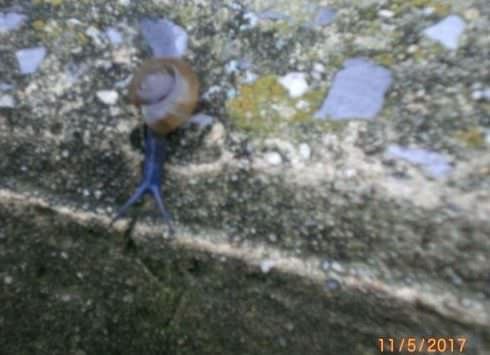
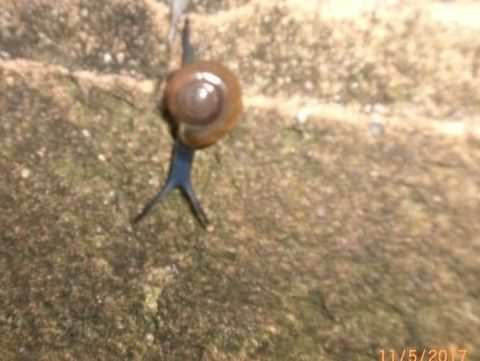
It is advised not to handle wild snails because some do harbor parasites that can cause serious diseases in humans and other animals. So please be on the safe side and do not handle wild snails.
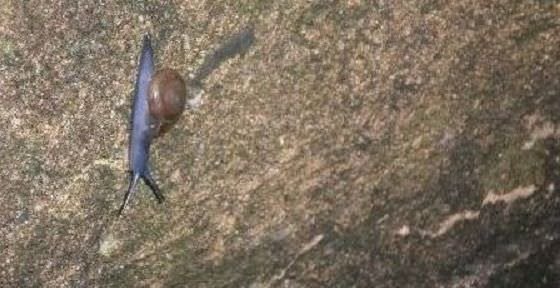
Information Source: softschools.com, snailworld.com, igentry.blogspot.com
Image Source: 100% own work.
Good post @whatisnew always been fascinated my snails and slugs
Thanks so much for the compliment! Glad you liked it and thanks for stopping by! : )
Interesting info! 'My daughter complains about slugs in her garden, but I saw my first one ever this fall. And I have never seen a land snail. There are tiny little black ones down in the spring, and I'm happy to have them stay there!
You saw your first slug...really? I see those gross looking things all the time. And here I thought that I was the only one who had never seen a land snail. Hope those tiny black ones stay down in the spring! LOL! : )
Maybe no slugs here in the woods because there is lots of other wildlife that likes to eat them? Your post is resteemed to my page.
That could very well be the reason. Thanks so much for the resteem! I sure do appreciate it! : )
Interesting slimy stuff.
Slimy stuff is right...very gross and slimy! : )
10" slug???😨
Both of my daughters and I as a child had some pet snails :) Great photos and info as always!
I know...right? Can you imagine a 10" slug? I would have nightmares for sure.
Really? Pet snails? Yuck!
Thanks once again for your compliments! : )
I would like to add steamit to the same category! It seems to be moving at the same speed for me today 🙄.
HaHa! Hope it is moving faster for you now! : )
Thank you!